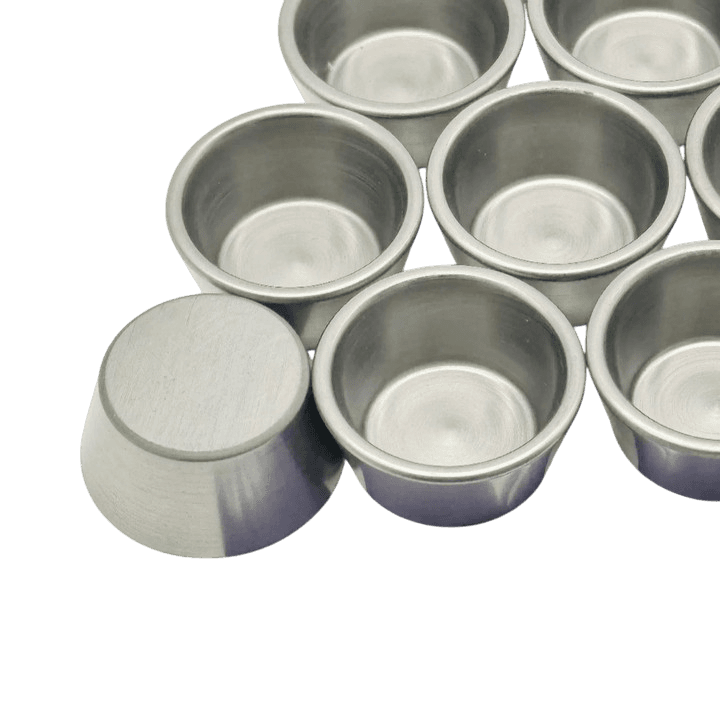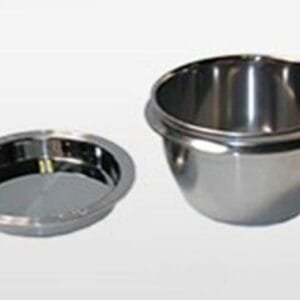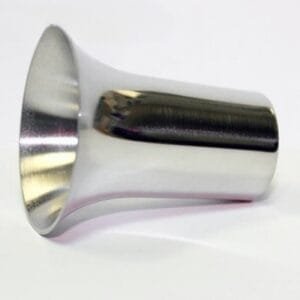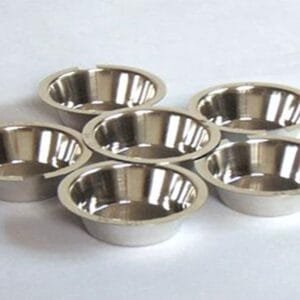Graphite E Beam Crucibles
TFM offers durable graphite E-beam crucibles, valued for their excellent thermal conductivity and high-temperature performance. These crucibles are perfect for electron beam evaporation, ensuring efficient material deposition in industries like semiconductors and optical coatings.
Related Products
Related products
PTU0435 Phoenix Platinum Crucibles & Molds
Rated 0 out of 5PTU1025 Linn® Platinum Crucibles & Molds
Rated 0 out of 5MU0085 Molybdenum Crucible
Rated 0 out of 5
FAQ
What is a crucible?
A crucible is a heat-resistant container designed to hold materials during high-temperature processes such as melting, alloying, or chemical reactions. They’re essential in metal casting, laboratory analyses, and even certain thin-film deposition systems.
What materials are crucibles typically made from?
Crucibles are usually made from ceramics like alumina, zirconia, silicon carbide, or magnesia due to their high melting points and chemical inertness. Graphite and metal (e.g., steel) crucibles are also used for lower temperature applications.
How do I choose the right crucible material for my application?
The ideal crucible depends on the temperature and chemical nature of the process. Always select a crucible material with a melting point significantly higher than that of the material being processed and one that is chemically compatible to prevent reactions or contamination.
What safety precautions should be taken when using a crucible?
Always wear appropriate personal protective equipment (PPE) such as heat-resistant gloves, face shields, and aprons. Use proper tongs for handling, ensure adequate ventilation, and follow established protocols to avoid thermal shock and accidental spills.
How do I prepare a crucible for use?
Prior to use, crucibles are usually “dried” or pre-fired to remove moisture and avoid thermal shock. Some applications recommend a seasoning or “dressing” process to improve performance and extend the crucible’s lifespan.
How should crucibles be stored?
Crucibles should be stored in a dry, well-ventilated area on wood shelving or other non-abrasive supports—not directly on concrete or metal floors—to avoid damage. They should also not be nested together to prevent chipping or cracking.
Can crucibles be reused?
Yes, most crucibles are designed for multiple uses if they’re properly maintained and cleaned. However, frequent use at extreme temperatures or for reactive materials may eventually degrade them, in which case replacement is necessary.
What are common issues encountered with crucibles?
Common challenges include cracking from rapid temperature changes (thermal shock), contamination from residual materials, and wear or erosion from high-temperature exposure. Following proper handling and maintenance guidelines helps mitigate these issues.
How do I clean and maintain a crucible?
Allow the crucible to cool completely, then remove any residues with a suitable scraper or chemical cleaner if recommended. Some crucibles benefit from an acid wash to remove stubborn deposits—but always follow the manufacturer’s guidelines to prevent damage.
What is the proper procedure for loading material into a crucible?
Ensure the crucible is pre-heated and free of moisture. Load the material slowly and evenly using appropriate tools to prevent splashing or uneven heating. For heavy or large pieces, use tongs or specialized equipment to maintain safety and consistency.
How do crucibles differ in metal casting versus evaporation processes?
In metal casting, crucibles are used to melt and hold metals for forming alloys or casting components. In evaporation processes (e.g., thin-film deposition), they heat materials to their vaporization point, allowing controlled deposition onto substrates.
Why are crucibles critical in industrial and scientific applications?
Their ability to withstand extreme temperatures and resist chemical reactions makes crucibles indispensable. They enable precise control over high-temperature processes in metallurgy, materials science, and chemical analysis, ensuring product quality and process reliability.







Reviews
There are no reviews yet.